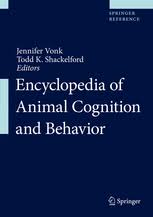Social Network Analysis in Encyclopedia of Animal Cognition and Behavior. Editor: Springer
Sebastian Sosa
This entry is an introduction to Social Network Analysis in animal research (tools, techniques, highlights). Social network analysis (SNA) originates from a branch of mathematics called graph theory. This disciplinary field has developed several concepts and analytical methods that permit the study of links between the components of a system. SNA is the result of multiple studies from different research fields and particularly from social sciences such as psychology, sociology, and anthropology. The SNA approach has facilitated the study of many other subjects in a large variety of disciplines such as anthropology, mathematics, economics, psychology, ethology, ecology, sociology, computer sciences, physics, epidemiology, cell biology, and biochemistry.
L’étude de l’émergence, de l’organisation et de l’évolution des structures de réseau par l’analyse de réseaux dynamiquesin Analyse des réseaux sociaux appliquée à l’éthologie et l’écologie. Editor: Editions Matériologiques.
Daniel Charbonneau, Sebastian Sosa , Cristian Pasquaretta, Jean-Loup GuillaumeJ
Networks are a means of representing complex interaction structures which can be used to model relations and processes in physical, biological, social and information systems. Most networks used to date have been static networks where interactions do not change over time, mainly due to computational limitations. However, many of the processes best studied using network theory are dynamic processes and, therefore, require dynamic, or temporal, networks to accurately describe their structures. Recent technological advances have allowed us to look at the emergence, organization, and evolution of network structures. In the present chapter, we discuss and contrast models based on log-linear processes (p1, p2 and p*) and the SIENA model (Simulation Investigation for Empirical Network Analysis) based on Markov processes. We then review a selection of studies that have used temporal networks applied to biological systems, and discuss exciting new avenues for applying temporal networks, including dynamic social networks and dynamic communities.
Primates non humains in Analyse des réseaux sociaux appliquée à l’éthologie et l’écologie. Editor: Editions Matériologiques.
Julie Duboscq, Céline BretCéline Bret, Sebastian Sosa
Nonhuman primates form complex, multi-generation social relationships and societies, which makes them good models for social network analyses at different levels. The long history of primate studies and our knowledge of their individualised relationships, of their dominance, kinship and cooperation relationships provide an ideal setting to apply new analytical techniques derived from social network analyses. This chapter highlights topics such as the relationship between individual characteristics and network structure, the links between collective decisions, social learning and social networks, the patterns of cooperation and preferential relationships within a social network as well as the evolution of societies through the evolution of social networks. These multilevel analyses provide new insights on nonhuman primate societies and allow a better understanding of the adaptive value of social relationships in particular and social life in general.
De l’utilité de l’analyse des réseaux sociaux dans l’étude du comportement animalin Analyse des réseaux sociaux appliquée à l’éthologie et l’écologie. Editor: Editions Matériologiques.
Cédric Sueur, Sebastian Sosa, Nicolas Perony
Le réseau social incarne une part significative des interactions entre organismes, il influence les paramètres sociodémographiques de la population tels que la dispersion des individus, le flux de gènes ou la transmission de comportements. Ce chapitre permet de comprendre l’intérêt de la caractérisation des réseaux sociaux dans l’étude de la socialité et du comportement animal. Cet outil nous permet d’étudier différents niveaux de la structure sociale, de l’individu à la population, mais il est également utile pour comparer des réseaux de nature différente. Au-delà de l'application de techniques connues à des systèmes sociaux, des enjeux majeurs subsistent aujourd'hui dans des questions telles que l'identification robuste de clusters au sein des réseaux sociaux, ainsi que de l'analyse dynamique de réseaux changeant au cours du temps. Les outils de description des réseaux sociaux ont différentes fonctions, que ce soit en recherche fondamentale, pour mieux comprendre l’évolution des sociétés animales, ou en recherche appliquée, pour aider à la gestion et au management de groupes captifs ou sauvages dans la conservation d’espèces


